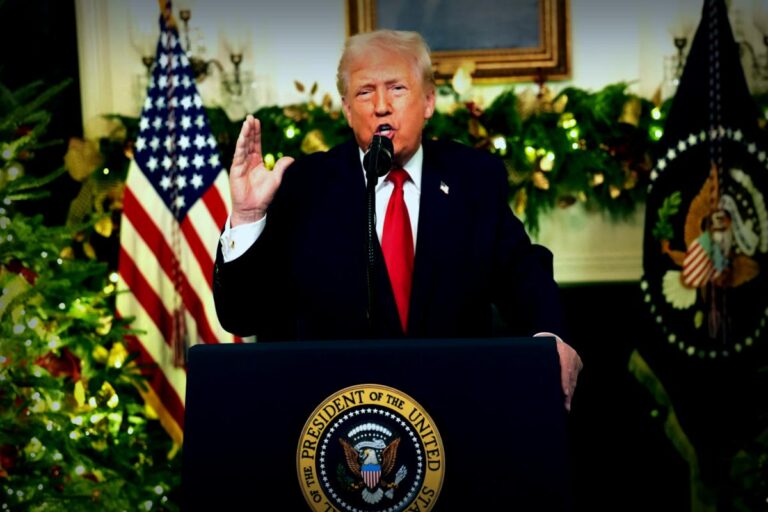It seems like the Trump administration just doesn’t believe in solar energy.
According to recent data from the Energy Department, solar panels actually delivered the most renewable energy to the U.S. grid last year. They are set to become the go-to source for new energy projects in the country throughout Trump’s presidency. However, both Trump and his advisors have expressed serious doubts about solar energy’s reliability and cost-effectiveness, claiming that it won’t have a significant impact on the future of energy.
Chris Wright, the Energy Secretary, recently referred to solar panels as a “parasite” on the electrical grid, insisting they wouldn’t be effective enough even if we covered every inch of the planet with them. The Twitter account of the Energy Department, which was once supportive of solar developments during the Biden administration, now classifies solar panels as “essentially worthless at night.”
In Trump’s recent U.N. address, he argued that the excessive costs associated with “green” energy are damaging both the free world and our planet.
His administration has utilized these sentiments to back up policies that stymie solar growth while promoting fossil fuels, especially natural gas—an industry where Secretary Wright has profited handsomely. In a conversation with The Washington Post, Wright maintained his negative assessment of solar energy, predicting that it will remain a minor player in global energy production.
Wright mentioned, “If solar continued to grow at its current rate, it *could* edge closer to gas, but I don’t see that happening.”
Despite solar power’s rapid expansion, it still accounts for less than 3% of global energy, with the bulk of our world’s needs being met by oil, gas, and coal, as per the Energy Department’s numbers.
Switching from fossil fuels to solar isn’t as straightforward as just replacing coal plants with solar arrays. Approximately 80% of global energy consumption still comes from vehicles, airplanes, and machinery that run directly on fossil fuels—they’d either need to be swapped out for electric models or powered by expensive fuels made from electricity.
Wright pointed out a key drawback of both solar and wind: they only produce electricity. “We’ve been promoting the `electrify everything` mantra for some time. Yet, we’re stuck at about 15% of manufacturing energy coming from electricity, the same as two and a half decades ago.”
Despite these concerns regarding renewable energy, many countries continue pouring resources into solar and wind initiatives, as they result in less harmful emissions and are often cheaper than fossil fuels. Rising electric vehicle usage has taken off in China and Europe, while electric heat pumps are starting to replace gas furnaces, trends which gradually increase electricity’s share in global energy consumption.
Josiah Neeley, a senior fellow at the R Street Institute, noted, “A hundred and fifty years ago, we didn’t use electricity at all. There’s a lot of non-electric energy consumption today that could shift over to electric.”
According to Robert Stavins, a Harvard energy experts, the U.S. under Trump’s solar policies is becoming a real outlier compared to other nations.
“The EU, China, and even India remain steadfast in their energy approaches—it’s essentially just the U.S. that’s falling behind,” Stavins remarked.
Interestingly, Trump’s stance also puts him at odds with prominent conservative thinkers, among them Elon Musk, who stated on X that solar is undeniably the future of energy for anyone with basic math skills. Wright, during a lively discussion on the “All-In” podcast, countered that Musk’s outlook on solar and battery tech is indeed overly optimistic.
Wright responded, “I’ll bet solar will never account for even 10% of global energy.” However, the Energy Department recently suggested in its International Energy Outlook report that solar could reach somewhere between 6% to 10% by 2050, depending on various factors.
Since Trump took office, policies aimed at curbing solar advancements—like cutting tax credits and restricting development on federal land—have been implemented. Wood Mackenzie analysts project that this could lead to an 18% slump in solar installations in the U.S. over the next five years, thanks to these policies.
Conservative thinkers approve of Trump’s cuts to Biden-era solar subsides, but his intention to block solar project permits has caused doubt.
Neeley argues, “If Secretary Wright believes that fossil firms will prevail and sees little hope for solar’s success, why impose limitations on solar instead of allowing for competition?”.
In contrast, Travis Fisher from the Cato Institute views Trump’s intervention as akin to Biden’s interference in fossil projects. “It’s kind of ironic seeing that it reflects the same battle that’s been fought from the left for years,” he stated. Bereits though opinions may collide, experts across the board assert that the Trump administration’s current strategy is stifling growth in one of the fastest expanding energy sectors in the United States.
Jesse Jenkins, an energy systems engineer at Princeton University, remarked, “Their policies really complicate things for effectively establishing competitive solar and wind resources, causing misinformation to be touted in public discourse as well.”
Experts believe that solar will keep on expanding despite government aid: “It’ll settle into its position, likely falling somewhere between the limits laid out by both solar maximizers and the predictions made by Trump,” a statement echoed by Fisher. “The only way to truly get an answer is by letting the market decide.”


















